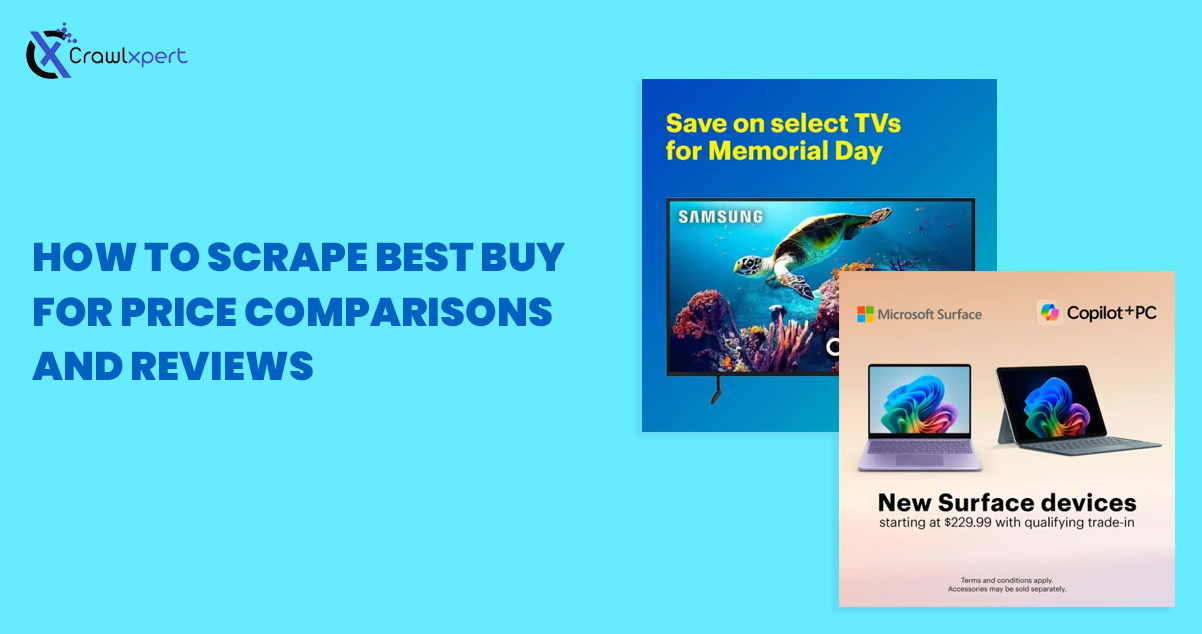
How to Scrape Best Buy for Price Comparisons and Reviews
Published on October 13, 2025
Introduction
The competitive nature of e-commerce has pushed businesses and individuals to find smarter ways to track pricing strategies and consumer feedback. One compelling method is scraping major retail platforms like Best Buy for real-time price comparisons and customer reviews.
In this detailed blog post, we'll cover everything you need to know about scraping Best Buy, from understanding the basics to setting up a fully automated scraping system.
Understanding the Importance of Scraping Best Buy
Best Buy is a top-tier online electronics retailer, listing thousands of products ranging from laptops to refrigerators. By scraping Best Buy, you can:
- Track product prices to ensure competitive pricing.
- Monitor deals and discounts in real time.
- Analyze customer reviews to understand product satisfaction.
- Gain business intelligence for inventory planning and marketing.
Whether you're a reseller, market researcher, or savvy shopper, extracting data from Best Buy can give you a major edge.
Is it Legal to Scrape Best Buy?
- Best Buy’s Terms of Service typically prohibit scraping without permission.
- Public data scraping (openly visible without bypassing security) is more defensible.
- Using scraping respectfully and ethically reduces risks.
- Robots.txt defines allowed/disallowed pages.
👉 Pro Tip: Always check Best Buy’s robots.txt and consult legal advice if scraping at scale.
Challenges in Scraping Best Buy
- Bot detection (CAPTCHAs, IP bans).
- Dynamic JavaScript-loaded content.
- Pagination & infinite scrolling.
- Frequent HTML structure changes.
Key Data Points to Extract from Best Buy
For Price Comparisons:
- Product Title, SKU, Price, Sale Price, Original Price
- Availability Status, Product URL, Categories
- Technical Specifications
For Reviews:
- Reviewer Name, Rating, Review Title, Content, Date
- Verified Purchase, Helpful Votes
Tools and Technologies for Scraping Best Buy
- Languages: Python, Node.js
- Libraries: BeautifulSoup, Scrapy, Selenium, Playwright
- Infra: Proxies, Rotating UAs, Headless Browsers
Step-by-Step: Scraping Best Buy
1. Install Dependencies
pip install requests beautifulsoup4 lxml2. Send a Request
import requests
from bs4 import BeautifulSoup
headers = {"User-Agent": "Mozilla/5.0"}
url = "https://www.bestbuy.com/site/searchpage.jsp?st=laptops"
response = requests.get(url, headers=headers)
soup = BeautifulSoup(response.text, 'lxml')3. Parse Product Listings
products = soup.select('.sku-item')
for product in products:
title = product.select_one('.sku-header a').text
price = product.select_one('.priceView-customer-price span').text
link = "https://www.bestbuy.com" + product.select_one('.sku-header a')['href']
print(f"Title: {title}\\nPrice: {price}\\nLink: {link}\\n")Best Practices for Scraping Best Buy
- Respect Rate Limits & delays
- Randomize User Agents
- Rotate IPs
- Adapt code to structure changes
- Store raw HTML + parsed data
Analyzing the Scraped Data: Price Comparison
- Compare across categories
- Identify biggest discounts
- Spot fake sales
- Competitor benchmarking (Amazon, Walmart)
Extracting and Using Reviews
Scraping customer reviews can reveal product strengths, weaknesses, and trends. Example sentiment analysis with TextBlob:
from textblob import TextBlob
review = "This laptop is amazing for its price!"
analysis = TextBlob(review)
print(analysis.sentiment)Conclusion
Scraping Best Buy for price comparisons and reviews can be a goldmine for businesses and researchers. With the right tools and ethical practices, you can gain insights that sharpen your competitive edge.

